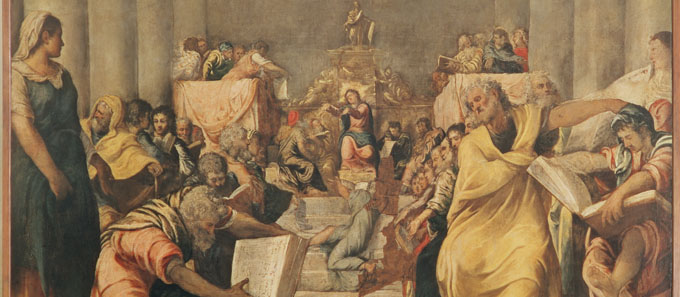
The Young Tintoretto

The study conference starts from Rodolfo Pallucchini’s pioneering research on the young Tintoretto and sets out to combine a historiographical approach with critical analysis. Robusti’s period of training (c. 1538. – c. 1550) is still not clearly known and there is a lack of specific studies to help or support the creation of a catalogue of his early works which, in view of F. Ilchman and R. Echols, should contribute to renewing our perception of the artist.
The first part of the conference will set out to describe “a youthful style” and identify the more or less evident influences in the first works attributed to Tintoretto. In this session there will be a special focus on questions of attribution, without, however, only addressing stylistic considerations, but also enquiring more widely into the history of the Venetian art scene in the years 1530-1540.
The second part of the conference, on the other hand, will be dedicated to more strictly iconographic and historiographical issues, beginning from an analysis of specific works. The paintings of the young Tintoretto show an original figurative language in which we perceive unusual cultural, philosophical and poetic references (see, for example, the paintings on mythological subjects), providing a starting point for exploring in greater depth the intellectual formation of the young artist.
Lastly, enquiring into the young Tintoretto also involves other painters and sculptors who around the mid-fifteenth century played a key role in Venetian art – the theme for the last part of the conference. For a long time the Tuscan-Roman training of these artists was seen as being in opposition to Venetian taste. Consequently, the arrival of these artists on the local scene from 1535–1550 has been rather neglected in terms of their influence. Studying Tintoretto’s youthful period thus also implies reopening the “case” of Mannerism in Venice (or Venetian Mannerism) and that of the fertile relations between the Venetians and the Florentine, Roman or Mantuan artists.
The conference has been organised by the Fondazione Giorgio Cini Institute of Art History, together with the Università Ca’ Foscari di Venezia, the École Pratique des Hautes Études (EPHE), the Université Charles-de-Gaulle-Lille 3 and the Université Lumière Lyon 2.
Download the programme The Young Tintoretto
